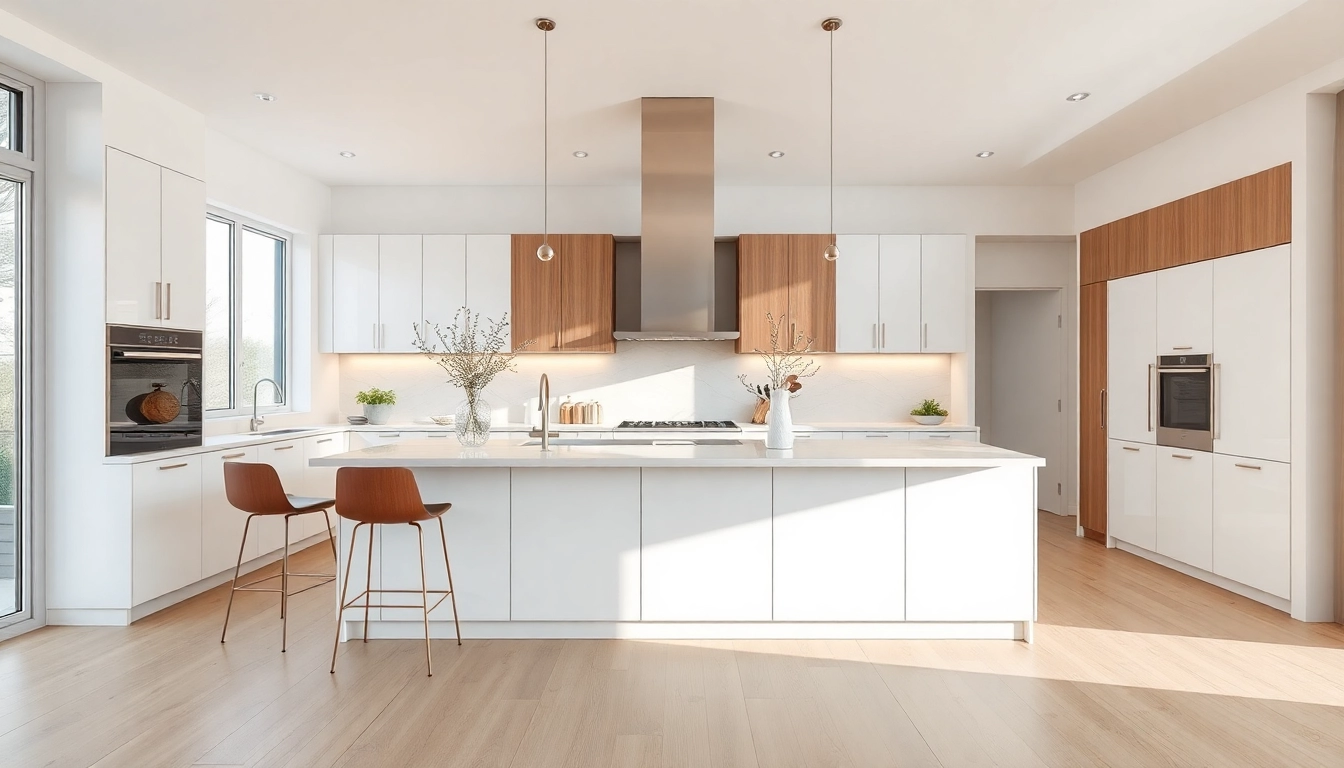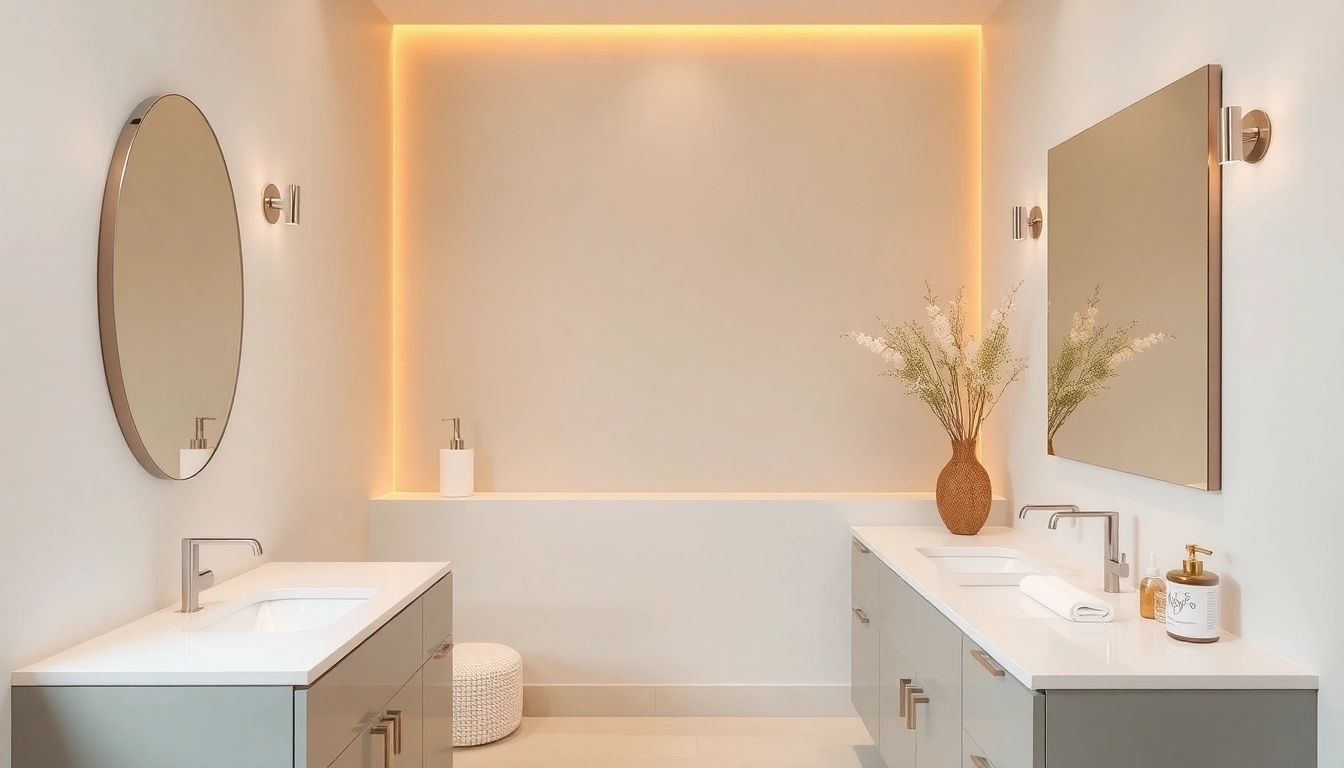Understanding Kitchen Remodels
Embarking on kitchen remodels requires careful consideration, as the kitchen is not just a place for cooking; it’s often viewed as the heart of the home. Here, families gather, guests are entertained, and memories are made. The definition of a kitchen remodel can vary widely, encompassing everything from minor face-lifts to complete overhauls. In this article, we’ll explore the essential elements of kitchen remodels, from understanding what they entail to executing them effectively.
What Constitutes a Kitchen Remodel?
A kitchen remodel can be as simple as updating cabinets and countertops or as complex as reconfiguring the space entirely. Generally, kitchen remodels fall into three categories:
- Minor Remodel: This may involve painting cabinets, changing fixtures, and updating appliances.
- Major Remodel: This includes reconfiguring the layout, adding or removing walls, and extensive upgrades.
- Custom Build: A complete redesign involving structural changes and high-end finishes tailored to specific needs.
Benefits of Remodeling Your Kitchen
Updating your kitchen offers numerous benefits, including:
- Increased Home Value: A well-executed kitchen remodel can significantly enhance the resale value of your property.
- Improved Functionality: Updating your kitchen layout can make cooking and entertaining more efficient and enjoyable.
- Energy Efficiency: Upgrading to energy-efficient appliances and better insulation can reduce utility bills.
- Aesthetic Appeal: A fresh design can create a more inviting and visually appealing space.
Common Kitchen Remodel Styles
There are various styles that homeowners may consider during a remodel:
- Modern: Characterized by clean lines, sleek surfaces, and minimalist designs.
- Traditional: Features classic details, warm colors, and a cozy atmosphere.
- Transitional: Blends elements from both modern and traditional styles, providing a balanced approach.
- Rustic: Incorporating natural materials, warm woods, and a more farmhouse aesthetic.
Planning Your Kitchen Remodel
When it comes to planning a kitchen remodel, careful preparation is crucial to ensure that the project runs smoothly and meets all expectations. This section breaks down the initial steps necessary to kick off a successful remodel.
Setting a Realistic Budget for Kitchen Remodels
The kitchen remodeling budget can vary widely based on several factors, including the extent of renovations, material choices, and regional labor costs. On average, a medium to large kitchen remodel may run between $32,574 to $77,939. Key aspects to help set a budget include:
- Understanding the costs of materials, such as countertops, cabinetry, and appliances.
- Researching local labor costs to gather quotes from contractors.
- Factoring in unexpected expenses, often recommended to reserve an additional 10-20% of the overall budget.
Choosing the Right Layout
The layout of a kitchen can immensely impact its functionality. Popular kitchen layouts include:
- Galley: Ideal for smaller spaces where efficiency is key.
- L-Shaped: Provides an open relationship with adjoining areas, often facilitating flow.
- U-Shaped: Offers ample counter space and storage, perfect for larger kitchens.
- Island: Incorporates a central island, adding both workspace and social interaction.
When deciding on a layout, it’s essential to consider the work triangle, which relates to the distance between the stovetop, refrigerator, and sink for an efficient workflow.
Essential Considerations and Planning Steps
To ensure a successful kitchen remodel, homeowners should follow these essential steps:
- Define Your Goals: Clarify what you want to achieve, be it more space, modern features, or better energy efficiency.
- Involve the Family: Gather input from all family members who use the kitchen regularly.
- Research Trends: Stay current with the latest design trends and technologies.
- Consult Professionals: Engage with contractors, designers, or architects, particularly for significant structural changes.
- Obtain Permits: Depending on the extent of your remodel, some renovations may require city permits. Check local regulations before starting.
Design Ideas for Inspiring Kitchen Remodels
Kitchen design can be both functional and beautiful. This section explores various design ideas that can inspire your kitchen remodel.
Modern vs. Traditional Kitchen Designs
Choosing between modern and traditional designs can set the tone for your entire space:
- Modern Designs: Often incorporate open spaces, large windows for natural light, and cutting-edge materials such as stainless steel and quartz.
- Traditional Designs: Use rich woods, intricate molding, and vintage-inspired appliances to evoke a sense of warmth and nostalgia.
Consider your home’s architectural style when selecting a design to ensure cohesion throughout your property.
Innovative Storage Solutions
Efficient storage can optimize a kitchen’s functionality. Ideas include:
- Pull-Out Cabinets: Utilize existing space more efficiently by incorporating pull-out shelves or drawers.
- Vertical Storage: Use high cabinets or overhead shelves to maximize vertical space.
- Multi-Functional Furniture: Consider islands or tables with built-in storage options.
Color Schemes and Material Choices
The color scheme and materials used can dramatically change the atmosphere of your kitchen. Popular trends include:
- Soft Neutrals: Create a calm and timeless look.
- Bold Accent Colors: Add personality through colorful backsplashes or cabinetry.
- Combination Materials: Mixing textures like wood, metal, and tile can add depth.
Executing Your Kitchen Remodel
After planning comes execution. This phase can be both thrilling and challenging, and it’s essential to navigate it with care.
Hiring Professional Help vs. DIY
Determining whether to hire professionals or tackle a remodel as DIY largely depends on the project scope:
- Hiring Professionals: Accomplishing high-quality work for complex projects often requires expertise.
- DIY Projects: Smaller updates, like painting or installing cabinet hardware, may be manageable and cost-effective but still understand your limitations.
Managing Timeline and Expectations
Establishing a timeline and understanding the renovation process can alleviate stress. Typically, kitchen remodels can take anywhere from a few weeks to several months. Factors influencing timelines include:
- The scope of work
- Material availability
- Contractor schedules
Overcoming Common Challenges
Every kitchen remodel comes with its challenges. Some common issues include:
- Budget Overruns: Stay vigilant about costs during execution and communicate clearly with contractors.
- Supply Delays: Order critical materials early to prevent project hiccups due to delays.
- Space Constraints: Be flexible with design adjustments based on the actual layout of your kitchen.
After Your Kitchen Remodel: What’s Next?
Once the remodel is complete, there are still steps to ensure your new kitchen remains functional and stylish for years to come.
Maintaining Your New Kitchen Space
Regular maintenance can protect your investments and keep your kitchen looking its best. Key maintenance tips include:
- Regular cleaning of countertops and appliances.
- Inspecting cabinetry for wear and tear.
- Sealing stone surfaces periodically.
Evaluating the Remodel’s Success
Post-remodel, assess whether your goals have been met. Consider gathering feedback from family members to ensure the new layout and design work as intended.
Trending Accessories and Upgrades
Stay current with kitchen trends by considering the following:
- Smart kitchen technology, such as smart refrigerators and smart ovens.
- Energy-efficient appliances that balance performance with sustainability.
- Unique fixtures, such as statement lighting that can enhance the overall aesthetic.
Ultimately, a kitchen remodel can be a rewarding experience that enhances not only your home’s functionality but also its value. With careful planning, attention to detail, and a clear vision, your new kitchen can become a place where memories are created for years to come.


